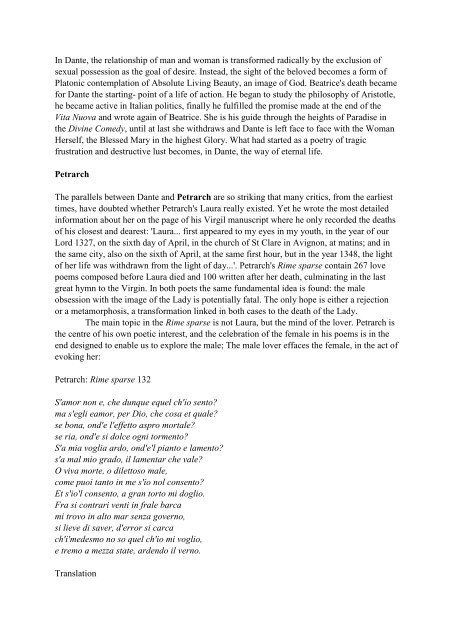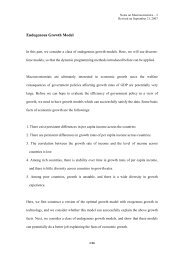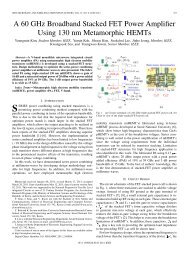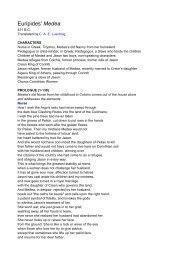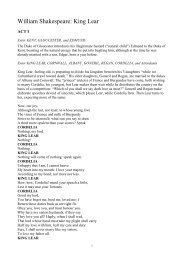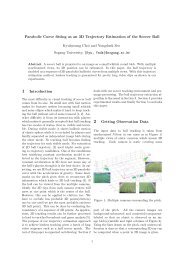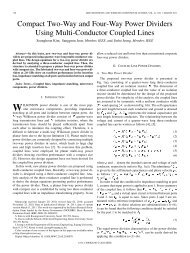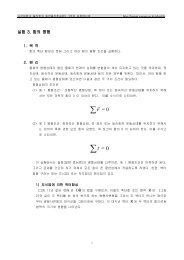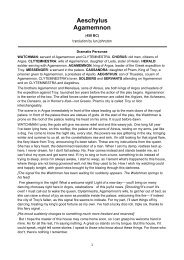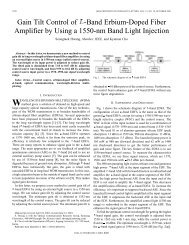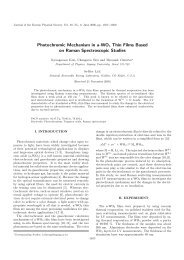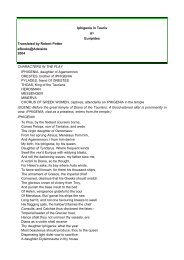In Dante, the relationship of man and woman is transformed radically by the exclusion ofsexual possession as the goal of desire. Instead, the sight of the beloved becomes a form ofPlatonic contemplation of Absolute Living Beauty, an image of God. Beatrice's death becamefor Dante the starting- point of a life of action. He began to study the philosophy of Aristotle,he became active in Italian politics, finally he fulfilled the promise made at the end of theVita Nuova and wrote again of Beatrice. She is his guide through the heights of Paradise inthe Divine Comedy, until at last she withdraws and Dante is left face to face with the WomanHerself, the Blessed Mary in the highest Glory. What had started as a poetry of tragicfrustration and destructive lust becomes, in Dante, the way of eternal life.PetrarchThe parallels between Dante and Petrarch are so striking that many critics, from the earliesttimes, have doubted whether Petrarch's Laura really existed. Yet he wrote the most detailedinformation about her on the page of his Virgil manuscript where he only recorded the deathsof his closest and dearest: 'Laura... first appeared to my eyes in my youth, in the year of ourLord 1327, on the sixth day of April, in the church of St Clare in Avignon, at matins; and inthe same city, also on the sixth of April, at the same first hour, but in the year 1348, the lightof her life was withdrawn from the light of day...'. Petrarch's Rime sparse contain 267 lovepoems composed before Laura died and 100 written after her death, culminating in the lastgreat hymn to the Virgin. In both poets the same fundamental idea is found: the maleobsession with the image of the Lady is potentially fatal. The only hope is either a rejectionor a metamorphosis, a transformation linked in both cases to the death of the Lady.The main topic in the Rime sparse is not Laura, but the mind of the lover. Petrarch isthe centre of his own poetic interest, and the celebration of the female in his poems is in theend designed to enable us to explore the male; The male lover effaces the female, in the act ofevoking her:Petrarch: Rime sparse 132S'amor non e, che dunque equel ch'io sento?ma s'egli eamor, per Dio, che cosa et quale?se bona, ond'e l'effetto aspro mortale?se ria, ond'e si dolce ogni tormento?S'a mia voglia ardo, ond'e'l pianto e lamento?s'a mal mio grado, il lamentar che vale?O viva morte, o dilettoso male,come puoi tanto in me s'io nol consento?Et s'io'l consento, a gran torto mi doglio.Fra si contrari venti in frale barcami trovo in alto mar senza governo,si lieve di saver, d'error si carcach'i'medesmo no so quel ch'io mi voglio,e tremo a mezza state, ardendo il verno.Translation
132. If it is not love, what then is it that I feel?But if it is love, by God, what kind of thing is it?If it is good, whence comes this bitter mortal effect?If it is evil, why is each torment so sweet?(...)Amid such contrary winds I find myself at sea in a frail bark, without a tiller,so light of wisdom, so laden with error, thatI myself do not know what I want;and I shiver in midsummer, burn in winter.BoccaccioBy 1335 or so, Giovanni Boccaccio, not yet 30 years old, had read the troubadours, theFrench original and Guido's translation of the Roman de Troie, Andreas Capellanus, Dante,Petrarch... so he set out to follow Dante's programme for vernacular literature exposed in hisDe vulgari eloquentia; by 1340 he had written an Italian epic in his Teseida, a study of thewill in the Filocolo, and a study of the fire of love in the Filostrato. The Teseida is the sourceof Chaucer's Knight's Tale, while the Filostrato gave Chaucer the material for Troilus andCriseyde.Boccaccio probably did not know the stories about Tristan, but in his romance aboutTroilus we are given a story in which the 'love interest' is so central that military aspects arealmost non-existent. From the vast Roman de Troie, with its many pages describing themilitary exploits leading to the destruction of Troy, Boccaccio selects only the segmentsdealing with the Troilus-Briseis-Diomedes triangle. These he expands into the story of 'thelove and wrath of Troilo' as an exemplum of the folly of falling under the power of 'love'sfire'.Boccaccio had also read La Vita Nuova and the Rime Sparse; in both he found thepoet's personal love-story introduced as sub-text to poems shaped in the conventions of thetroubadours. So the Greek title Filostrato that Boccaccio gave the work was understood byhim as meaning 'a man vanquished and laid prostrate by love' This refers to Troilo, but itequally refers to the poet, as the Proem makes clear. The poem is dedicated to 'Filomena' (theloved one) and tells the story of Troilo who was 'vanquished by love both by fervently lovingCriseida and then again by her departure.' So, he informs his lady and his readers in theProem: 'as many times as you find Troilo weeping and grieving for the departure of Criseida,that many times you may clearly recognize and know my own cries, tears, sighs, anddistresses; and as many times as you find the beauty, the good manners, or any other thingpraiseworthy in a lady written of Criseida, that often you can understand them to be spokenof you.' His purpose is writing this work (Teseida and Filocolo contain the same subtext) was:'in the person of someone emotionally overcome as I was and am, to relate my sufferings insong.' The work becomes an emblem of the poet's own unhappiness caused by hopeless love.This explains the virtual exclusion of the Trojan War from the action, the highlylyrical style, and the oddly laconic mention of Troilo's death. For Boccaccio is not writing alove tragedy; Troilo's death has nothing at all to do with his love. Troilo is refused a tragicfate, both during the poem when he is about to kill himself thinking that Criseida has died,and at the end. The work is about happiness, and the loss of it because of a woman's


